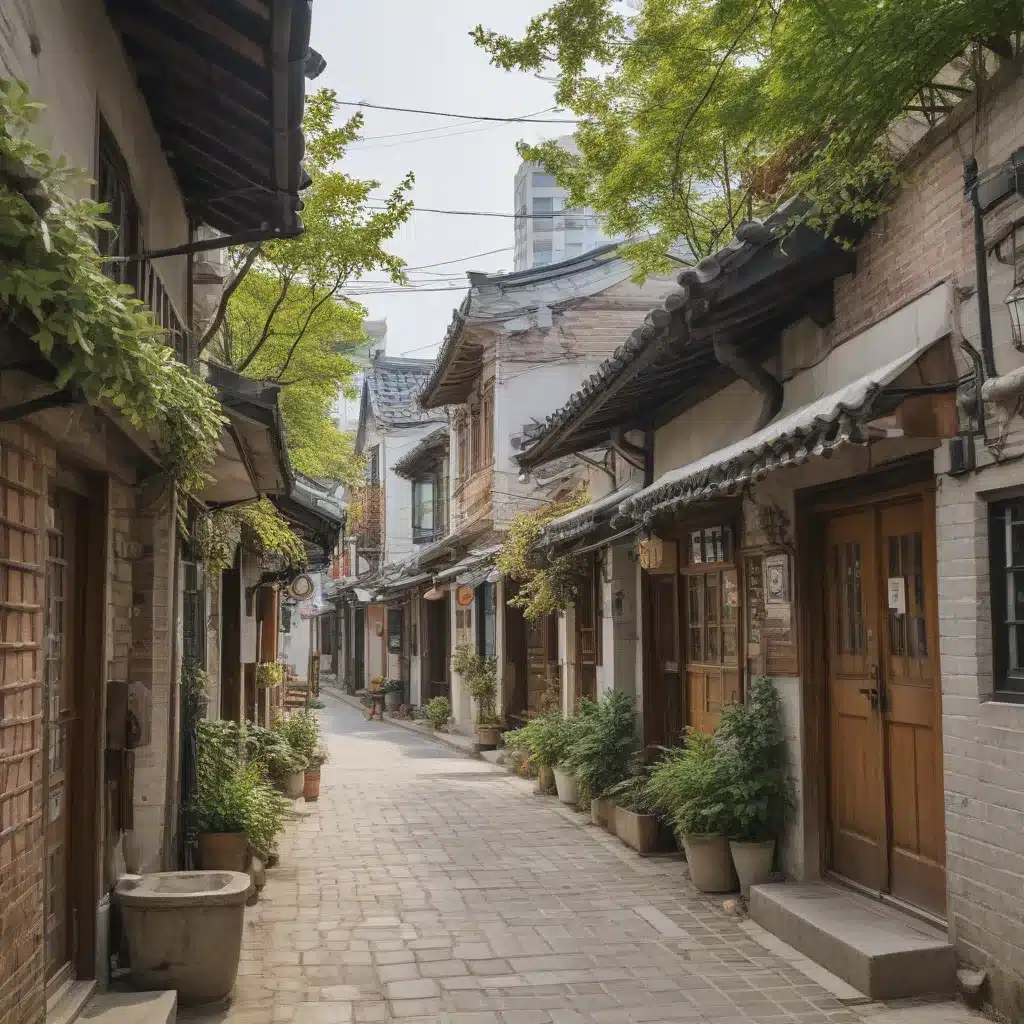
Discovering the Heart of Seoul’s Cultural Heritage
As I step into the bustling streets of Insa-dong, I can’t help but feel a sense of excitement and wonder. This charming district, nestled in the heart of Seoul, South Korea, has long been hailed as the epicenter of the country’s rich cultural heritage. From the moment I arrived, I knew I was in for a truly immersive experience.
A Stroll through Insa-dong’s Past
Insa-dong’s history stretches back centuries, and its evolution has been nothing short of fascinating. I learn that during the Joseon Dynasty, this area was home to government officials, aristocrats, and various ministries, including the Chunghunbu, which investigated the achievements of those who had done valorous deeds for the government or royal family.
It wasn’t until the late 19th century that Insa-dong truly began to take shape as a hub for traditional Korean culture. When King Gojong tried to establish an empire to stave off Japanese encroachment, he designated a spot in Insa-dong as the geographical center of Seoul, the “Great Daehan Empire.” Though this didn’t last, it laid the foundation for the district’s transformation.
As I delve deeper into Insa-dong’s history, I uncover the fascinating story of how the Japanese colonial government’s redesign of Seoul’s streets and neighborhoods in the early 20th century led to the creation of the Insa-dong we know today. The yangban (aristocratic) class, stripped of their titles and income, sought to sell their family heirlooms in the district, drawing in Japanese antique merchants and, later, art shops and traditional pubs.
Uncovering Insa-dong’s Hidden Gems
As I wander through the streets, I’m struck by the juxtaposition of old and new. The main thoroughfare is a bustling hub of activity, with modern coffee shops and franchise stores rubbing shoulders with traditional art galleries and calligraphy shops. But it’s the hidden alleyways that truly captivate me.
Heeding the advice of the “curmudgeon’s guide,” I venture off the beaten path, exploring the charming backstreets and discovering a world of traditional restaurants, hold-out antique dealers, and artisanal workshops. It’s here, in these quiet corners, that I truly feel the heart and soul of Insa-dong.
One of my favorite discoveries is the unassuming tea house, its sign written only in Korean. As I step inside, I’m transported to a world of warm wood, a serene courtyard, and the rich aroma of expertly brewed green tea. The staff, though not fluent in English, greets me with a warm smile and graciously helps me navigate the menu, suggesting the perfect accompaniment to my tea.
Savoring the Flavors of Insa-dong
Of course, no visit to Insa-dong would be complete without indulging in the district’s renowned street food. As I wander the main street, the tantalizing scents of tteokbokki (spicy rice cakes), gimbap (Korean-style sushi rolls), and hotteok (fried dough pastries) waft through the air, tempting me at every turn.
Heeding the advice from a fellow traveler’s account, I make a beeline for the Insa-dong hotteok, with its cornmeal-infused dough that gives it an extra satisfying crunch. Paired with a steaming cup of makgeolli (traditional Korean rice wine), it’s a truly authentic and delectable experience.
As I savor the flavors, I can’t help but marvel at the creativity and innovation of Korean street food. From the mesmerizing tornado potato to the cheeky “poop bread,” these culinary creations are a testament to the ingenuity and playfulness of the local culture.
The Evolving Landscape of Insa-dong
Despite the many charms of Insa-dong, it’s clear that the district is in a state of flux. As the “curmudgeon’s guide” laments, the once-vibrant antique shops, art galleries, and traditional pubs have been steadily replaced by franchise stores, coffee shops, and tourist traps. The very character of the district seems to be slowly eroding.
Yet, even amidst this change, I find pockets of resistance, where local artisans and small businesses continue to thrive. The Knife Gallery, with its impressive collection of antique and replica swords, stands as a testament to the district’s enduring cultural legacy. And the Sol-eep Makkolli, a specialty makgeolli bar, offers a taste of the traditional and the innovative, all in one delightful establishment.
Embracing Insa-dong’s Evolving Spirit
As I prepare to leave Insa-dong, I can’t help but feel a bittersweet mix of emotions. I’m saddened by the loss of the district’s charming alleyways and traditional establishments, yet I’m also inspired by the resilience and ingenuity of the people who are working to preserve its unique character.
Perhaps the key to experiencing Insa-dong lies in embracing its evolving spirit. By venturing off the main streets, exploring the hidden corners, and supporting the local artisans and small businesses, I’ve been able to glimpse the heart and soul of this captivating district. And as I return to my hotel in Seoul, I know that I’ll carry the memories of Insa-dong with me, a testament to the enduring power of cultural heritage in the face of change.

